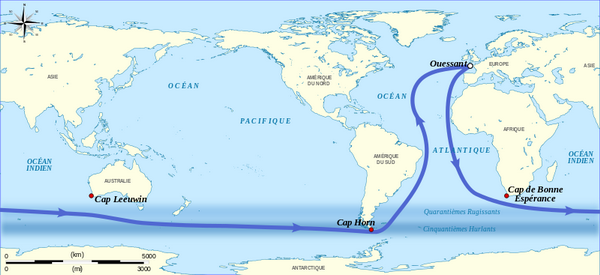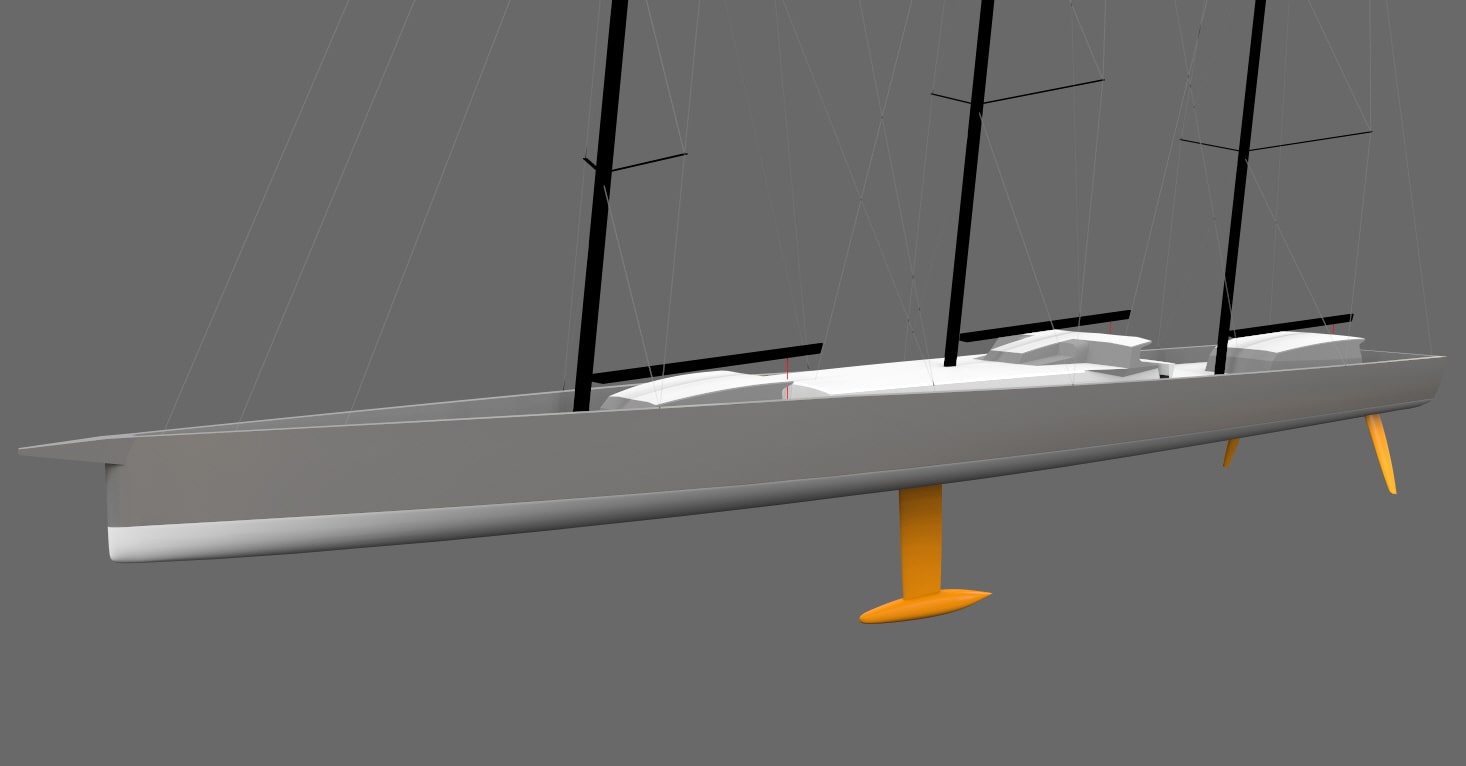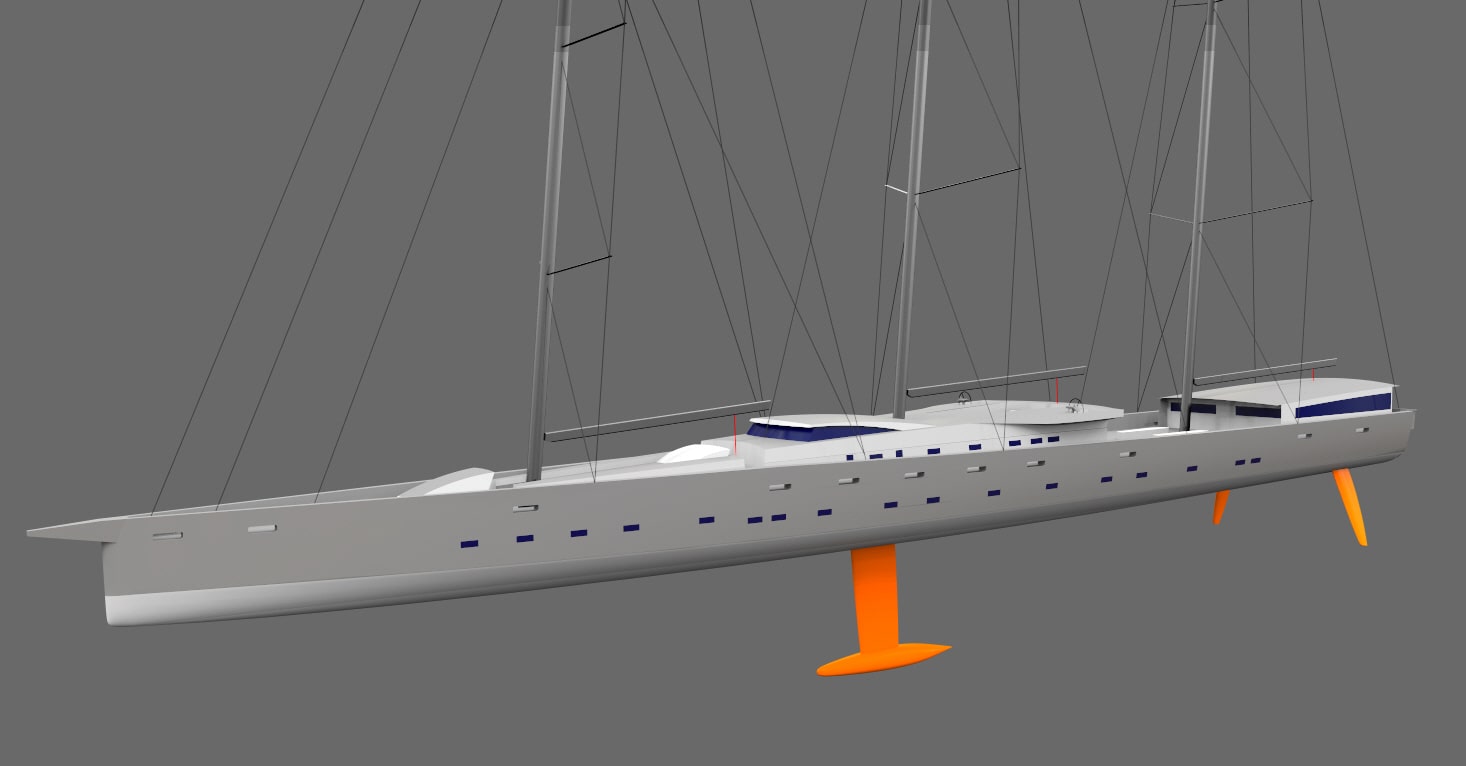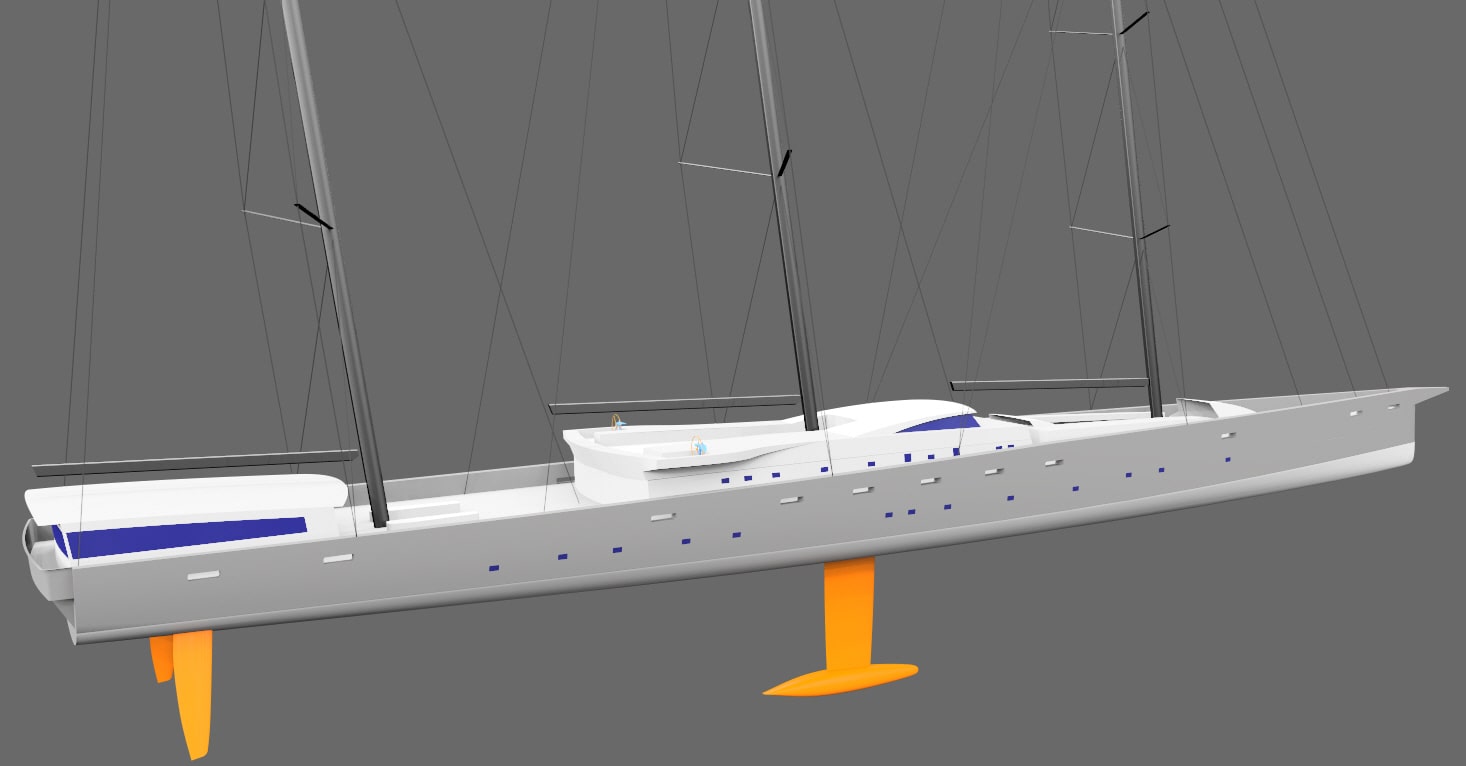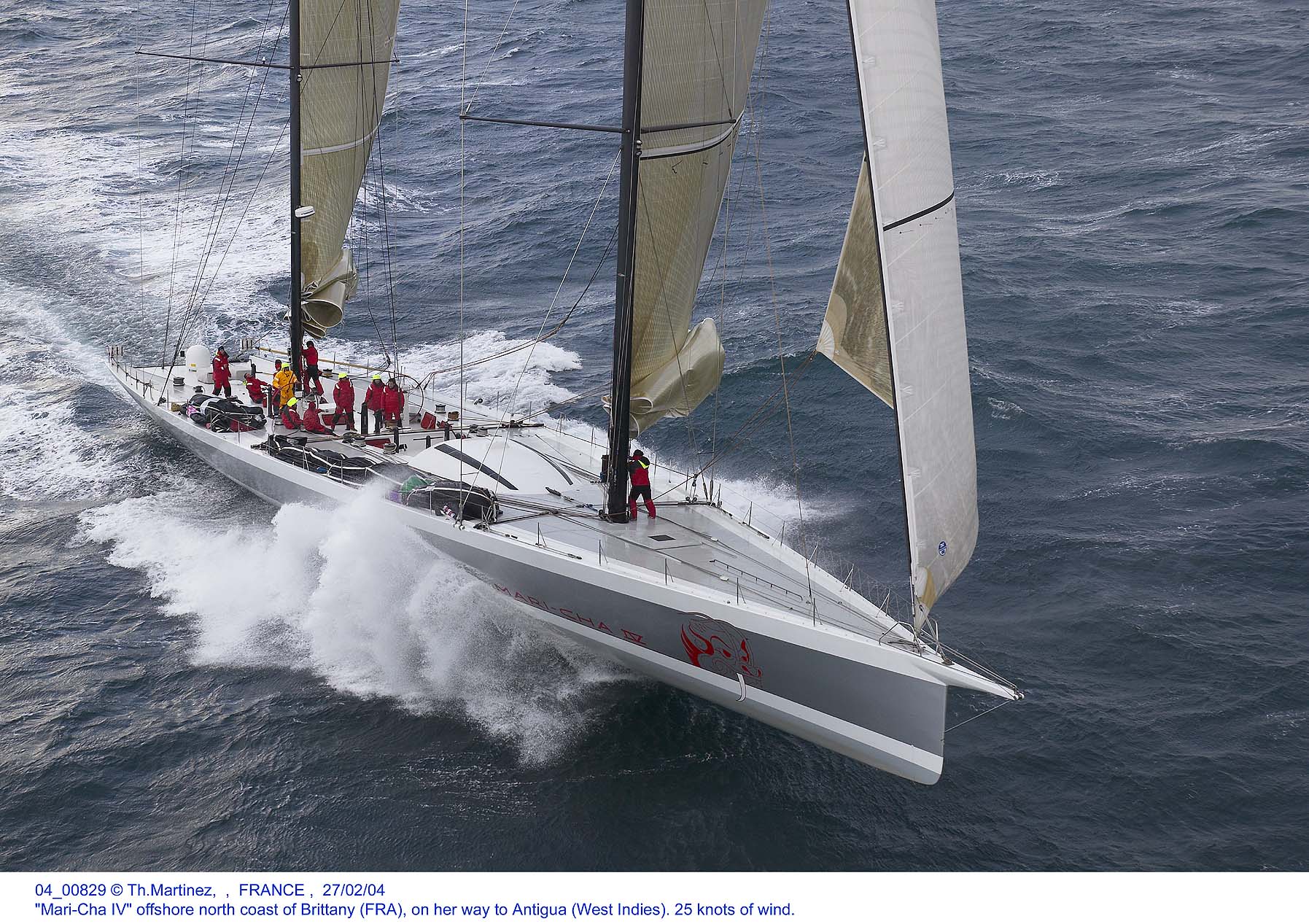There have been 12 people who landed on the Moon; 340 people have crossed various oceans on row boats; and more than 3,500 people have climbed Mt. Everest. However, as of July 1st, 2014, there has yet to be a team to sail a monohull non-stop around the world. The remaining frontier to be conquered by a crewed monohull is winning the Jules Verne Trophy.
The Jules Verne Cup requires sailing non-stop around the world in less than 80 days. The route is classical, from west to east, via three major points: Cape of Good Hope (Africa), Cape Leeuwin (Australia), and Cape Horn (South America) totaling 27 thousand nautical miles.
Right now, there is an international race to build a crewed monohull that will be able to sail around the globe in 80 days. Together with his team, Fedor Konyukhov has been working towards building such a boat since 2004. The goal of the project is participating in the Jules Verne Cup under the Russian flag. It is a long-term endeavor consisting of four stages.
Stage One: Building the monohull.
The construction will be taking place at Pendennis Shipyard in Falmouth, England. Fedor Konyukhov has many years of experience working with the shipyard. From 2004 to 2008 Pendennis and Fedor Konyukhov partnered together to customize, prepare and equip the 85-foot long maxi-yacht “Trading Network Alye Parusa” for 2004 – 2005 around the world sailing, and the 2007-2008 racing in the Antarctica Cup.
Stage Two: Sailing the crewed monohull in the Jules Verne Trophy.
The goal is to sail around the world in 80 or fewer days, starting from the strait of La-Manche towards the Cape of Good Hope (Africa), then through Cape Leeuwin (Australia), continue to the Cape Horn (South America), finishing the race in the strait of La-Manche, covering in total 27,000 nautical miles.
Stage Three:
- Fedor Konyukhov’s solo, non-stop eastbound sailing around the world for the Jules Verne Trophy. He will sail the classical route from west to east, starting and finishing in the strait of La-Manche (English Chanel). Thus, it will be the first attempt to sail the crewed maxi monohull single-handedly around the world for the Jules Verne Trophy.
- Fedor Konyukhov’s solo, non-stop, westbound circumnavigation (against the prevailing winds). Presently, there is only one standing record of 122 days, 14 hours and 3 minutes. The record was set by a French skipper Jean-Luc Van Den Heede who sailed non-stop and single-handedly monohull Adrien from east to west.
Stage Four:
Setting new and improving on existing records:
1. Transatlantic W to E, Ambrose Light (New-York, USA) – Lizard Point (England). Current record is 6 days, 17 hours, 52 minutes by Mari Cha IV, skipper Robert Miller and a crew of 24.
2. Transatlantic E to W, Cadiz (Spain) – San-Salvador (Bahamas). Current record is 10 days, 23 hours, 9 minutes by Volvo 70 Maserati, skipper Giovanni Soldini.
3. New-York- Cape Horn – San Francisco. Current record is 47 days, 42 minutes by Volvo 70 Maserati, skipper Giovanni Soldini.
4. Pacific Ocean (Northern Hemisphere): San-Francisco (USA) – Yokohama (Japan). This route has no standing records for a crewed monohull.
5. Pacific Ocean (Southern Hemisphere): Valparaiso (Chile) – Brisbane (Australia). This route has no standing records for a crewed monohull.
6. Round Australia (Sydney – Sydney). Current record is 37 days, 1 hour, 23 minutes by Kaz, skipper David Pescud.
7. Sydney (Australia) – Auckland (New Zealand), also known as Trans-Tasman Sea Record. Current record is 2 days, 19 hours, 2 minutes by Team Australia, skipper Sean Langman.
8. Trans-Mediterranean Sea Record: Marseille to Carthage. Current record is 1 day, 2 hours, 43 minutes byGroupe Bell, skipper Kito de Pavant.
9. A classic 600-mile record: Newport (USA) – Bermuda. Current record is 2 days, 28 minutes by a monohull Morning Glory, skipper Hasso Platner.
10. A classical 600-mile record: Sydney – Hobart (Australia). Current record is 1 day, 5 hours, 52 minutes by Team Australia, skipper Sean Langman.
To read more about the current records held by various monohulls and all other ratified records click here.
The Superyacht.
So far, there is only one monohull that has a capability of circumnavigating the world in 80 days with a crew. Her name is Senso One/ Mari Cha IV – a 43 meters carbon composite boat with 45 meter high masts. Senso One is the first monohull to sail 500 miles in 24 hours, and is capable of attaining a top speed of 40 knots. Built in 2003 the boat has gotten old technically and physically; nevertheless, it remains a great exemplar of a superyacht.
Considering the ambitious future plans for the new superyacht, Fedor Konyukhov and his team have determined that the hull length of the monohull should exceed 60 meters and be built in aluminum. To ease the work with the sails, it is planned to construct three masts that are 37 meters tall.
The boat designers Merfyn Owen and Allen Clarke of OwenClarkDesign Ltd proposed the following parameters for the new monohull: hull length of 60 meters; fixed three masts; fixed keel; 10 meter draft; two daggerboards; water ballasts including one at the stern and one at the bow; two steering wheels; three cockpits, one under each mast.
After completing the proposed list of various races in Stage Four, the monohull will be converted into a research vessel to work under the flag of the Russian Geographical Society. The monohull will be capable to withstand storms of highest Category and will have no difficulties transporting scientists and explorers to the most remote parts of the planet.
The new 60-meter monohull will represent Russia as one of the world’s leading sailing powers. The immediate goal, however, for the new monohull will be to carry a crew around the world in 80 days for the Jules Verne Trophy. If this project is successful Russia would make history as the holder of one of the World’s most prestigious sailing records.
